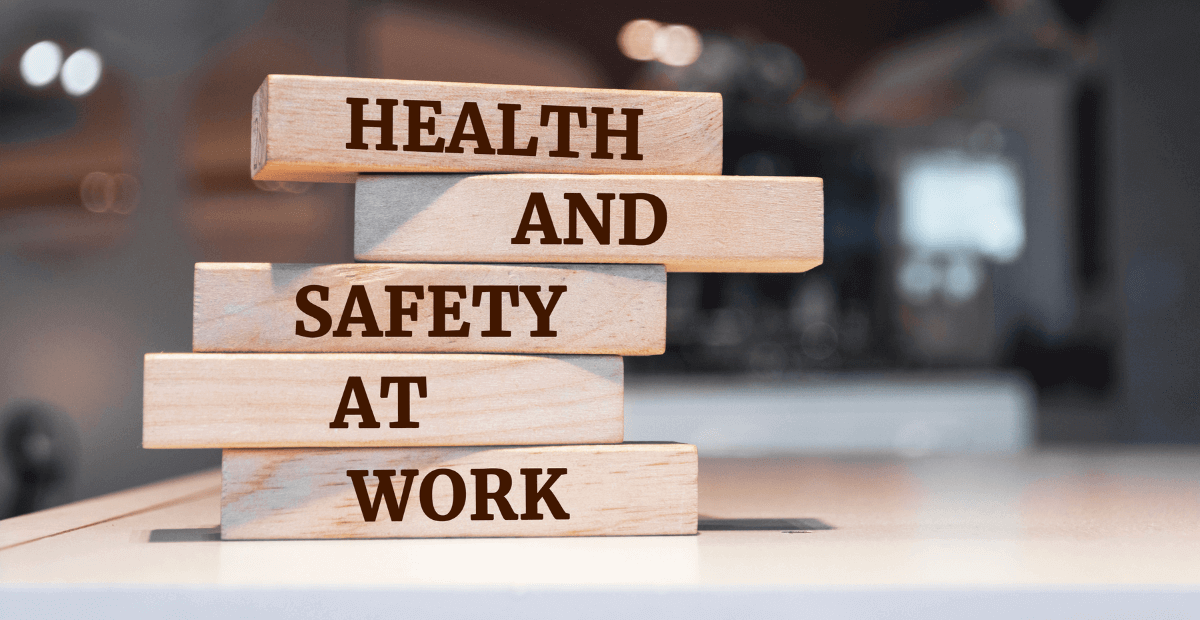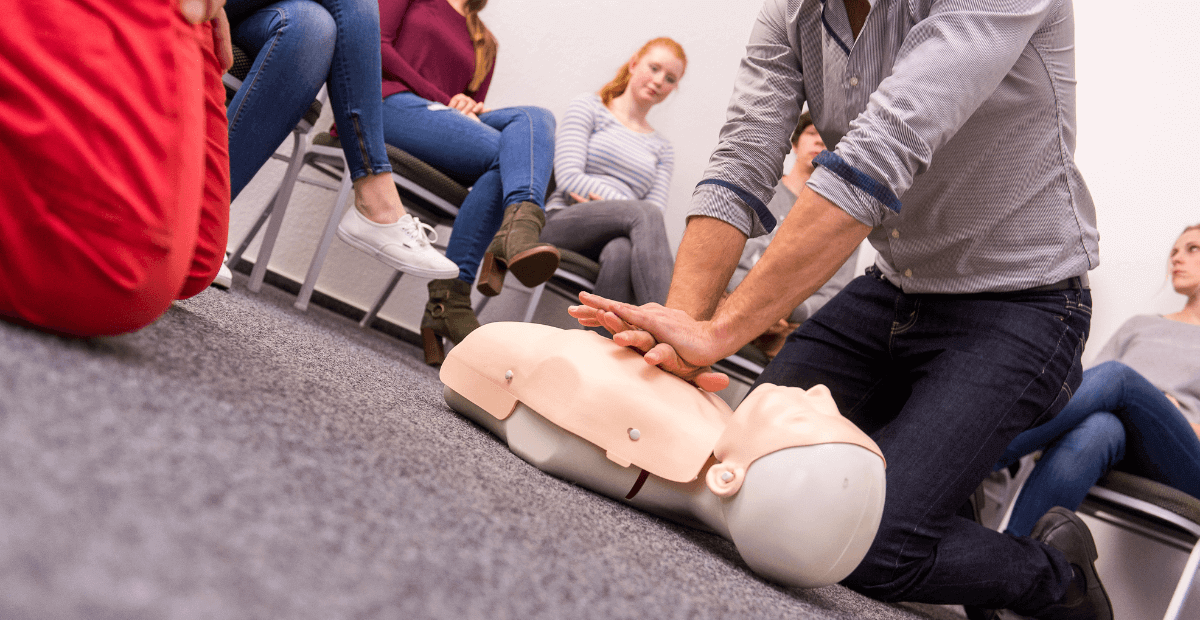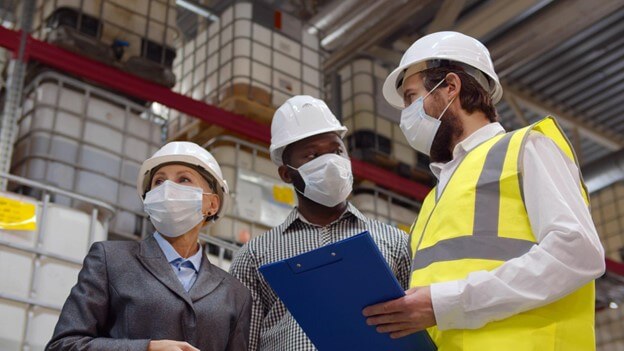Employers are legally responsible for workplace safety and must appoint a competent person (with training, skills, and experience) to manage it daily — though liability stays with the employer. Employers must ensure safety through risk assessments, clear signage, proper PPE, staff training, and open communication. Maintain competence at all levels via ongoing development.
Employers often get confused around what exactly their health and safety responsibilities are.
It is important to understand that avoidable accidents and incidents in the workplace can not only be devastating to the well-being and morale of your workforce, but they can also result in costly financial penalties and even costlier reputational damage. In fact, serious and preventable accidents constitute a breach in your legal obligations to protect your workers.
That's why it’s absolutely essential that you know your health and safety responsibilities. To help, we've put together a guide covering these legal responsibilities, who should be responsible for health and safety in your workplace, and which credentials this competent person should have.
If you need immediate support with any health and safety challenges you may be facing, get in touch with one of our H&S specialists on 01455 858 132.
for FREE, same-day support.
- Definition of competence in health and safety
- What legislation is in place to enforce health and safety?
- What can I do to guarantee workplace safety?
- Principles of general competence
- The competent health and safety adviser
- General and specific competence
- Retaining competence
- Developing knowledge
- Developing experience
- Developing personal qualities
- Specific legislative requirements
- Get expert health and safety advice

Who is your health and safety competent person
As we’ve briefly mentioned, employers are responsible for workplace safety. As an employer, it is your duty to ensure the health, safety, and welfare of your staff. However, employers typically need to assign a competent, responsible individual the task of ensuring this duty is carried out from day to day. Whilst some worksites come with greater risks than others, even the safest workplaces need all staff to assist in managing potential hazards in the workplace.
- Remember, all your staff members must be aware of and follow compliant health & safety procedures set out if your policies and documentation.
- Employing a competent person to assess and prevent health and safety risks can help your business write and formalise comprehensive policies. However, understand that hiring someone for this role would not make you, as the employer, less legally responsible should accidents/incidents occur.
- All breaches of health & safety law, including avoidable accidents and other incidents, ultimately fall under your responsibility as an employer.
Definition of competence in health and safety
The Health and Safety Executive (HSE) define competence in health and safety as 'the combination of training, skills, experience and knowledge that a person has and their ability to apply them to perform a task safely'.
The HSE also makes clear that other factors such as attitude and/or physical ability can also affect an individual's competence in the realm of health and safety. When selecting your competent person(s), it is essential that you assign duties based on their overall health competence.
What legislation is in place to enforce health and safety?
Two of the main laws affecting businesses is:
- The Workplace (Health, Safety and Welfare) Regulations 1992.
- Health and Safety at Work Act 1974.
It covers many important health & safety issues affecting workplaces. For full details on what the regulations cover, please review the full document on the Health and Safety Executive (HSE) website.

What can I do to guarantee workplace safety?
Firstly, start by ensuring general awareness around risks are effectively communicated via your policies, procedures, and documentation, is critical to ensuring you operate a safe and secure workplace.
Remember, in order to identify these risks, you need to conduct suitable and sufficient risk assessments at suitable intervals and take action to reduce risks as you discover them. These could be simple acts such as:
- Unblocking a fire exit.
- Updating respiratory protective equipment.
- Updating Personal Protective Equipment (PPE) such as eye protection.
These simple, intentional acts can have a life-saving effect.
Secondly, one of the most effective places to start decreasing risk is by ensuring you install safety signage in your workplace. Once you have installed these, you need to provide training to all staff on how to interpret the meaning of this signage.
Thirdly, think of other forms of Health and Safety training. This could include, but is not limited to:
- What a workplace hazard might be, and the risks it might pose.
- How to deal with a hazard, if necessary.
- Emergency processes and procedures such as fire evacuation procedures.
Now, some job roles will come with specific risks; a construction worker might need the training to work at heights, so bear in mind the context of your industry when deciding which training to deliver.
Last, and above all else, foster constant dialogue with your staff about the importance of health & safety in your workplace. This means ensuring your workers know they can come to you if they have identified a health and safety issue. It is your duty to always investigate concerns, and where necessary, adjust the workplace or staff job duties. For example, if your workers have come to you with suspicions that a specific room or space has a greater fire risk, then ensure the room has enough of the correct fire extinguishers.
Principles of general competence
The words competent and competence are used comprehensively throughout health and safety-related legislation, approved codes of practice, and other official guidance. It is a key element in promoting positive health and safety outcomes. The competent person you select to manage health and safety procedures in your workplace needs also to demonstrate these principles in their skillset.
In this context, competence can be defined as the combination of skills and knowledge that enables a person to make informed decisions and carry out a defined task in relation to health and safety.
For instance, HSG65 Managing for Health and Safety describes competence as:
“The ability to undertake responsibilities and perform activities to a recognised standard on a regular basis”
HSG65 also states:
“Truly effective health and safety management requires competency across every facet of an organisation and through every level of the workforce”.
The need for competence
The main duty placed on an employer by the Health and Safety at Work, etc Act 1974 (HASAWA) is to ensure the “health, safety and welfare of those affected by their work activities”. Therefore, and corroborated by the Health and Safety Executive, the competence of individuals at all levels of an organisation is vital as it “ensures they recognise the risks in their activities and can apply the right measures to control and manage those risks”.
Additionally, from a health and safety management viewpoint, competence is demonstrated when consideration is given to:
- If a workforce undertakes work safely and in safe working conditions (at all levels of an organisation).
- The person charged with the duty of advising on health and safety matters.
- The person(s) charged with undertaking specific tasks (e.g. risk assessments).
At this juncture, we’ve outlined several different, but equally applicable definitions of competence from a health and safety perspective. It is essential, then, that your competent person demonstrates qualities consistent with these definitions.
Now, let’s take a closer look at more perspectives of competence in relation to health and safety to refine your understanding.

The meaning of competence
The Management of Health and Safety at Work Regulations 1999 states that a person is deemed to be competent if they have an adequate combination of training, experience, and/or knowledge.
Regulation 7(8) requires employers to consider appointing a competent person who is in their employment in preference to one who is not. This means you as the employer must provide adequate training, as required, to the competent person.
In more general terms, a competent person should be capable of:
- Undertaking a specified activity safely, at their level of responsibility.
- Understanding the potential risks related to an activity that they are to carry out.
- Detecting and reporting any defects or omissions.
- Recognising any implications for the health & safety of themselves and others.
- Specifying appropriate remedial actions that may be required.
- Refusing to undertake a particular task if the potential risk assessed is too great.
Let’s take a closer look at more specific measures of competence below.
Competence benchmarks in the workforce
Employers will need to identify the appropriate level of competence required in the general workforce, as well as for specific roles. The aim of this exercise is to understand the amount and types of learning and development that will be needed (typically through information, instruction, training, and supervision as required under HASAWA 1974 Section 2) to ensure that all employees have the right knowledge, skills, and behaviours to perform the jobs they do.
Determining the levels of competence required within specific sectors of your workforce is essentially about identifying the skills, knowledge, and experience these sectors need to complete a specific task safely, which can be influenced by:
- The type(s) of work activities, equipment used, and substances present.
- The need for compliance with legislative requirements.
- Guidance on competency in any Approved Code of Practice (ACOP) and other official guidance.
- The complexity of any control measures, operating procedures, and instructions required to control risks.
As an example, under COSHH regulations, the ACOP highlights that, to be competent, the person carrying out this risk assessment should:
- Know how the work activity uses, produces, and/or creates substances hazardous to health.
- Have the knowledge, skills, training, and experience to make sound decisions about the level of risk present and the measures needed for prevention or adequate control of risk exposure.
- Have the ability and authority to, on behalf of the employer, collate all the necessary, relevant information.
Now, let’s discuss your competent person in more detail, sometimes known as a health and safety adviser.

The competent health and safety adviser
The function of a health and safety adviser, or 'competent person', is to assist the management team, at all levels, in awareness, monitoring, and the implementation of an organisational health and safety policy.
It is necessary for the adviser to have:
- The core knowledge necessary to understand the issues covered in the policy — knowledge of the processes/activities is required alongside knowledge of health and safety legislation and best practice.
- Sufficient ability to apply this knowledge practically by putting it in context.
- Sufficient personal qualities to be able to inform, persuade, and advise people with diverse characters and needs, in such a way as to achieve the necessary aims of the organisational safety policy.
The main attributes of competence are the ability to:
- Identify the root problem or issue in a situation.
- Identify and obtain sufficient and relevant information to determine the cause.
- Appreciate the limits of personal knowledge and seek further guidance and support when necessary.
- Apply the relevant aspects of their core knowledge to formulate a practicable solution — taking into account both legislative requirements and the resources of the organisation.
- Implement the solution, most often through a third party (e.g. a supervisor or manager).
- Monitor the operations of an organisation to attempt to foresee future problems and issues that may arise and take pre-emptive action where possible.
Personal qualities of the health and safety adviser
The health and safety adviser role within an organisation may involve one person or a team of people. However, it doesn’t matter if you are appointing one person, or a team of people to manage health and safety aspects in your organisation, specific personal qualities should be present.
Firstly, the competent person(s) needs to function as part of a team. This will be either within a health and safety department or as a part of a wider management team. This requires that he or she communicates effectively with managers and employees throughout the organisation.
Secondly, occupational health and safety is constantly changing, along with the needs of all types of enterprises. This is not only in terms of changing legislation; changes in technology frequently give rise to novel situations in which the competent person has to work. This requires competent persons to be willing to acknowledge the limits of their capabilities and be able to continue their personal and professional development to accommodate these needs or to be willing and able to seek help and advice from other sources.
Thirdly, whilst there are likely to be other personal qualities or skills that a competent person may need to exhibit according to different working circumstances, the most desirable ones are:
- Resource management skills (time management, and financial literacy).
- Enthusiasm, determination, and integrity.
- Desire and ability to continue personal and professional development.

General and specific competence
HSE guidance states that, “all employees, including senior management, should receive relevant training. This may need to include basic skills training, specific on-the-job training, and training in health and safety or emergency procedures”.
Therefore, staff at all levels of an organisation will require some form of competence to enable them to undertake their duties. This can range from senior managers understanding safety management to an employee being trained in how to use Personal Protective Equipment (PPE) in an appropriate manner.
When setting out your organisation’s policy on health and safety, along with the necessary planning and organisation to implement it, consideration has to be given to the level of competency required throughout an organisation to ensure there is a competent workforce.
By identifying the key health and safety competencies of individual roles, and the amount and types of learning and development that will be needed (typically through information, instruction, training, and supervision), you will be able to determine whether all employees have the right knowledge, skills, and behaviours to perform the jobs they do.
Factors to consider when determining competence will include the:
- Work environment.
- Preventive and control measures required.
- Legal requirements and other requirements.
- Health and safety policy.
- Potential consequences of compliance and non-compliance.
- Duties and responsibilities associated with the roles.
- Individual capabilities, including experience, language skills, and literacy.
After the initial analysis of competency levels, it is necessary to have in place arrangements to identify and remedy any shortfalls between the current level of competency possessed by employees, the required level, and what information, instruction, training, and supervision, if any, will be necessary to bridge the any identified gaps.
Retaining competence
The main barriers to retaining competence are lack of practice and changing circumstances, for example, the introduction of new technologies.

Developing knowledge
Knowledge may be refreshed or increased by attending training courses or workshops.
Other sources of increasing knowledge include conferences and seminars. These can be variable in their relevance to the competent person and so need careful selection. Whatever the content, it is likely to assist the competent person by virtue of the contacts made and the ability to discuss issues with other people.
Practitioners may wish to keep up to date with developments in legislation and case law by reading industry-approved publications.
Another way of refreshing and increasing knowledge is for the competent person to attend branch meetings of a professional body relevant to the individual’s tasks.
Developing experience
Events where a number of practitioners meet together, e.g. conferences, seminars, and branch meetings, can be extremely useful. These gatherings provide a means whereby the competent person can share in the experiences of others. It is quite often the case in the less formal gatherings that anecdotal evidence can provide guidance on a good, or bad, means of approaching a specific problem.
Developing personal qualities
The issue of developing any employee’s personal qualities is most often addressed across an organisation through the human resources department. This can be achieved through a number of means, but the most common is by encouragement through effective appraisal systems.
The appraisal should stress the positive and highlight the negative. An effective appraisal can be a very efficient means of enhancing personal qualities beneficial to the prevention of health and safety risks. However, a poor appraisal can severely damage and disempower a competent person.
Again, enabling the competent person to gain an insight into the way that others achieve similar tasks by comparison with colleagues and peers at events is particularly useful.

Specific legislative requirements
The general requirements for competent persons come from the general duties imposed on an employer in s.2 of the Health and Safety at Work, etc Act 1974, but other pieces of legislation make specific mention of competence or competent persons. These requirements are usually related to specific hazards that pose significant risks.
Get expert health and safety advice
For advice on H&S in your workplace, including health & safety training, and health & safety consultancy, speak to one of our experts.
Croner has a team of award-winning HR consultants who are specialists in their field. We've been helping businesses for over 80 years, and our advice line is open 365 days a year, 24 hours a day.
Speak to a Croner expert on 01455 858 132.
Related resources
Categories
- Business Advice
- Culture & Performance
- Disciplinary & Grievances
- Dismissals & Conduct
- Employee Conduct
- Employment Contracts and Documentation
- Employment Law
- Employment Rights Bill
- End of Contract
- Equality & Discrimination
- Health & Safety
- Hiring and Managing
- Leave & Absence
- Managing Health & Safety
- Moving
- Occupational Health
- Pay & Benefits
- Recruitment
- Risk & Welfare



